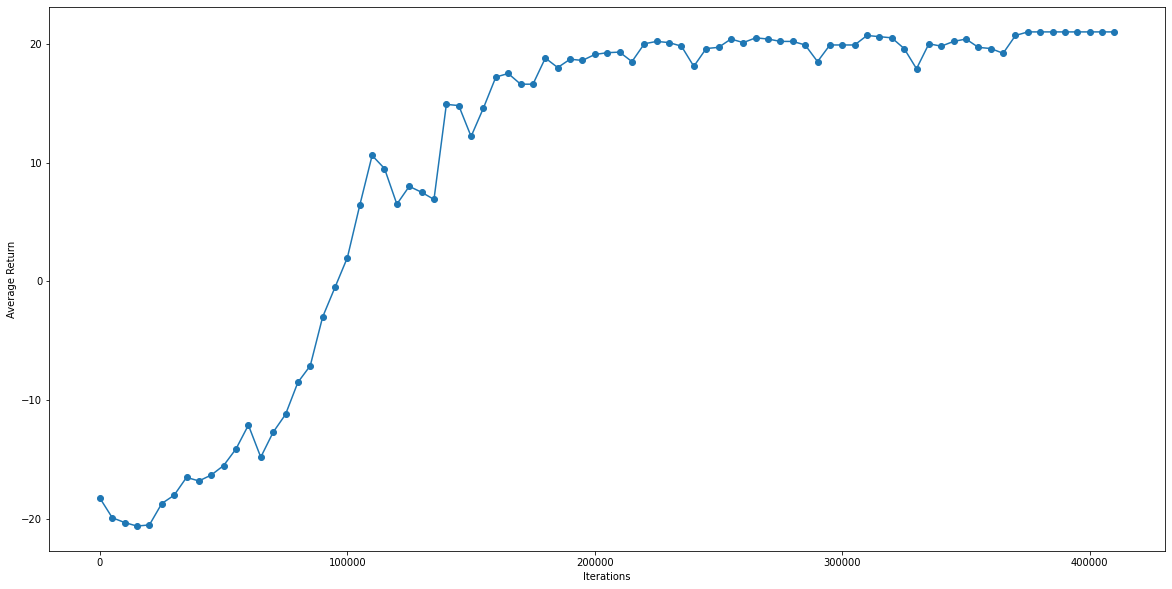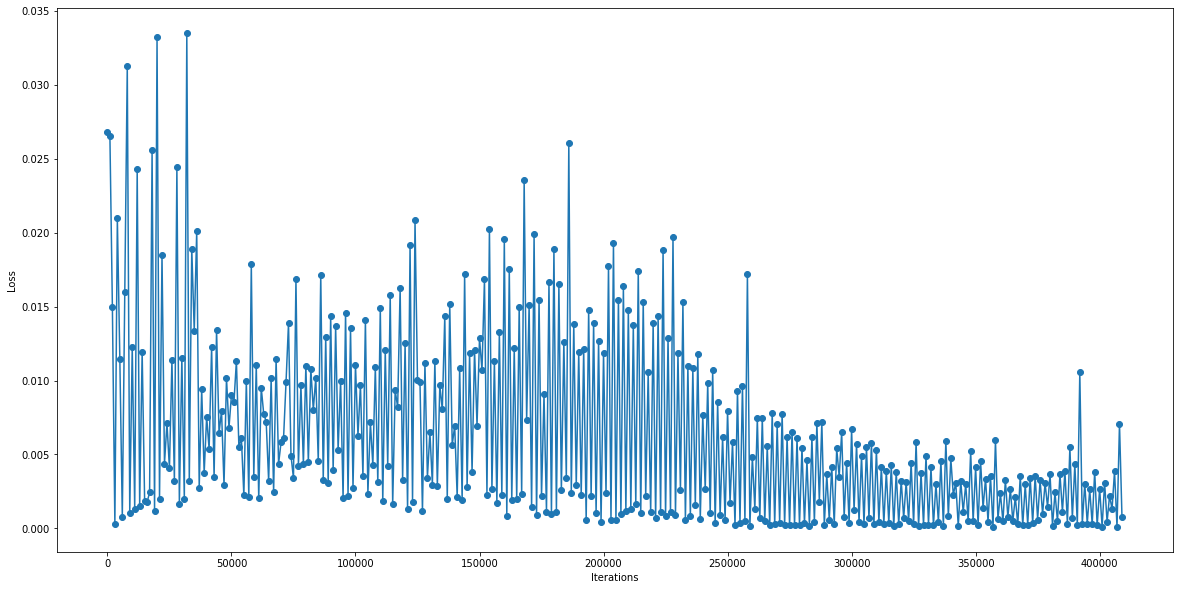evals: range(0, 410001, 5000),
list(evals): [0, 5000, 10000, 15000, 20000, 25000, 30000, 35000, 40000, 45000, 50000, 55000, 60000, 65000, 70000, 75000, 80000, 85000, 90000, 95000, 100000, 105000, 110000, 115000, 120000, 125000, 130000, 135000, 140000, 145000, 150000, 155000, 160000, 165000, 170000, 175000, 180000, 185000, 190000, 195000, 200000, 205000, 210000, 215000, 220000, 225000, 230000, 235000, 240000, 245000, 250000, 255000, 260000, 265000, 270000, 275000, 280000, 285000, 290000, 295000, 300000, 305000, 310000, 315000, 320000, 325000, 330000, 335000, 340000, 345000, 350000, 355000, 360000, 365000, 370000, 375000, 380000, 385000, 390000, 395000, 400000, 405000, 410000],
returns: [-18.25, -19.9, -20.3, -20.6, -20.5, -18.7, -18.0, -16.5, -16.8, -16.3, -15.5, -14.1, -12.1, -14.8, -12.7, -11.2, -8.5, -7.1, -3.0, -0.5, 2.0, 6.4, 10.6, 9.5, 6.5, 8.0, 7.5, 6.9, 14.9, 14.8, 12.2, 14.6, 17.2, 17.5, 16.6, 16.6, 18.8, 18.0, 18.7, 18.6, 19.1, 19.25, 19.3, 18.5, 20.0, 20.2, 20.1, 19.8, 18.1, 19.6, 19.7, 20.4, 20.1, 20.5, 20.4, 20.2, 20.2, 19.9, 18.5, 19.9, 19.9, 19.9, 20.7, 20.6, 20.5, 19.6, 17.9, 20.0, 19.8, 20.2, 20.4, 19.7, 19.6, 19.2, 20.7, 21.0, 21.0, 21.0, 21.0, 21.0, 21.0, 21.0, 21.0]



